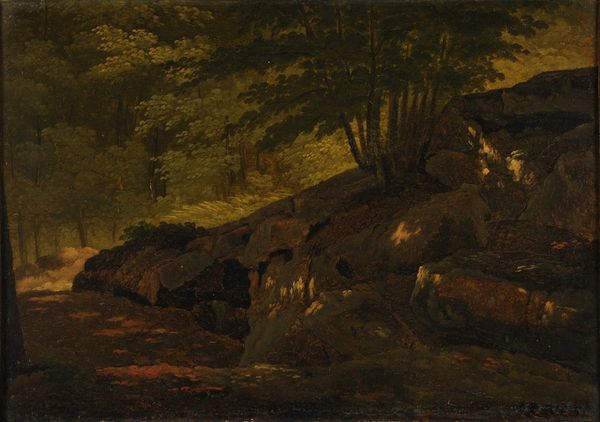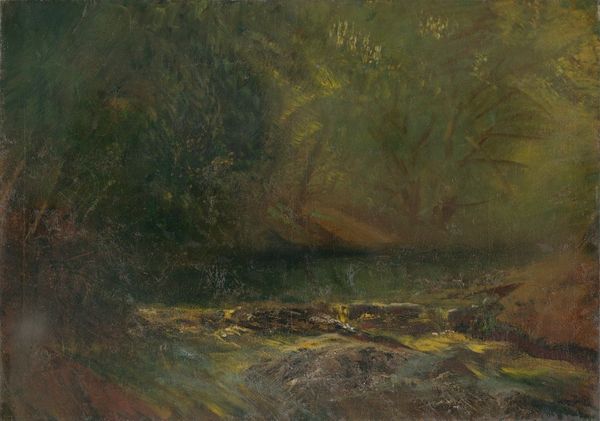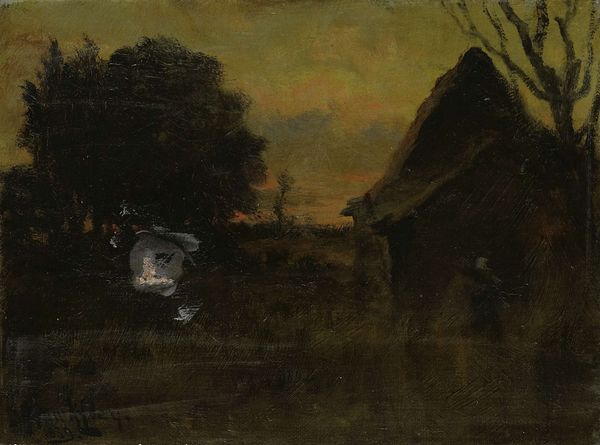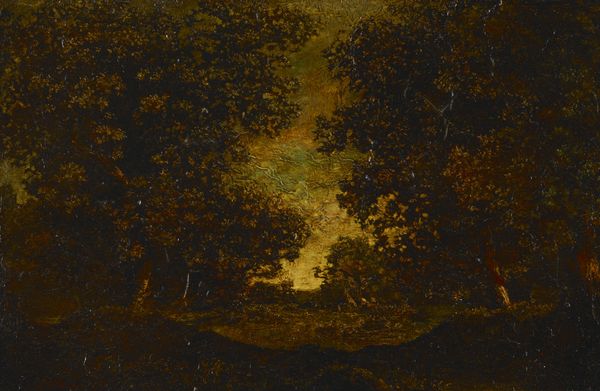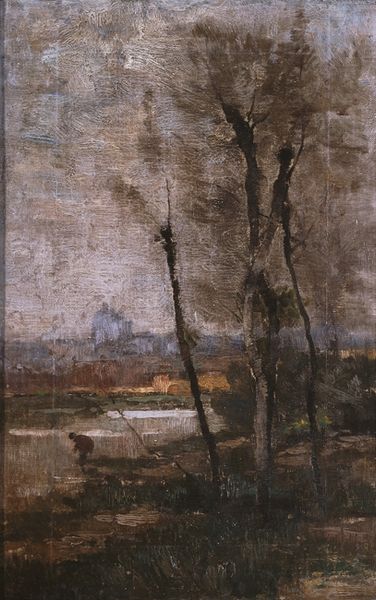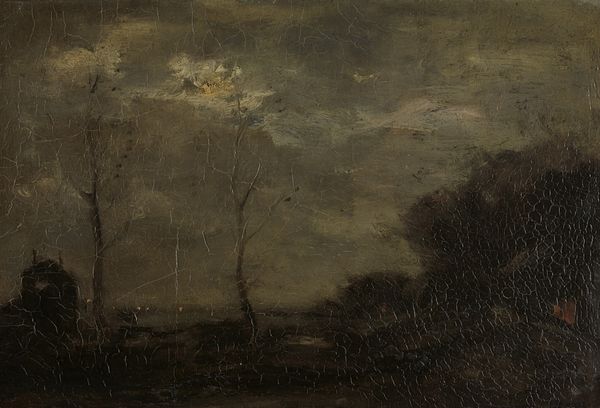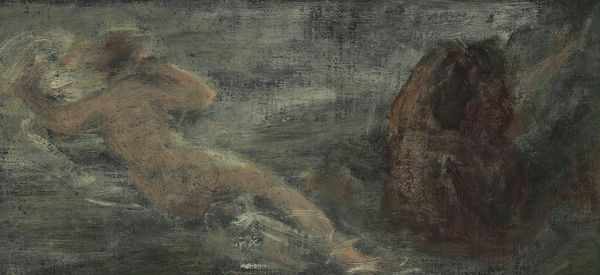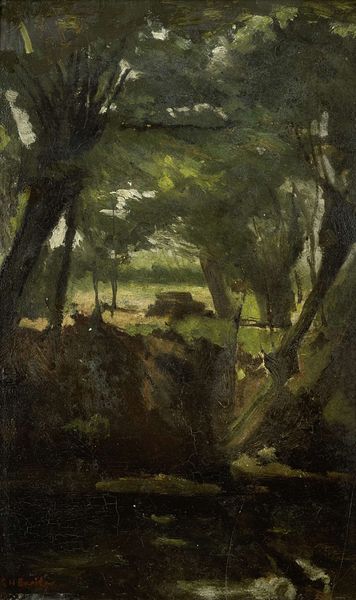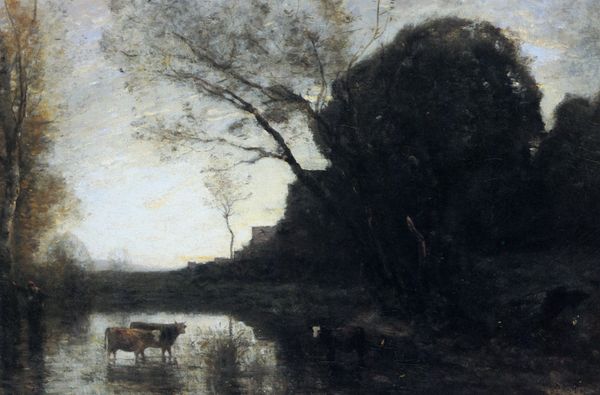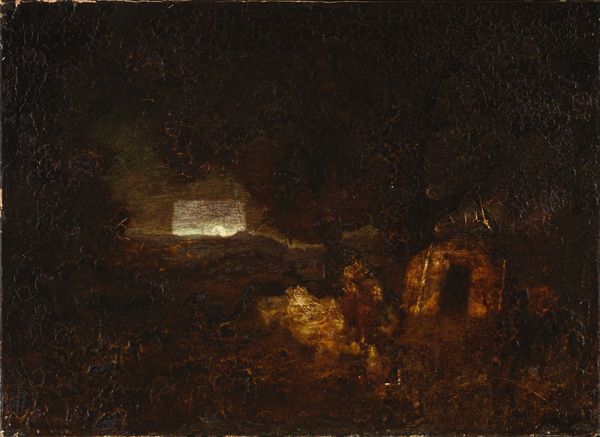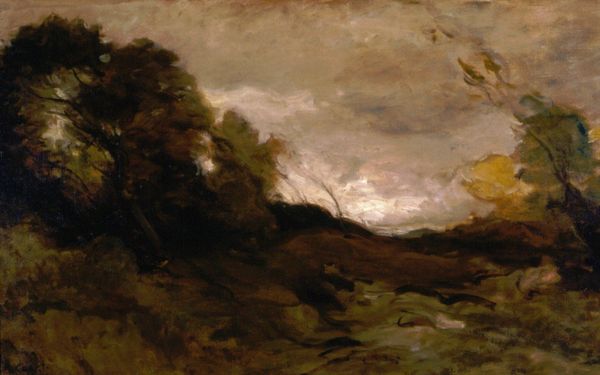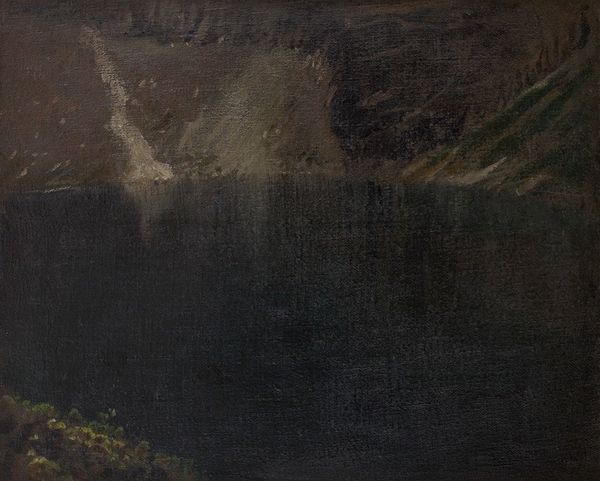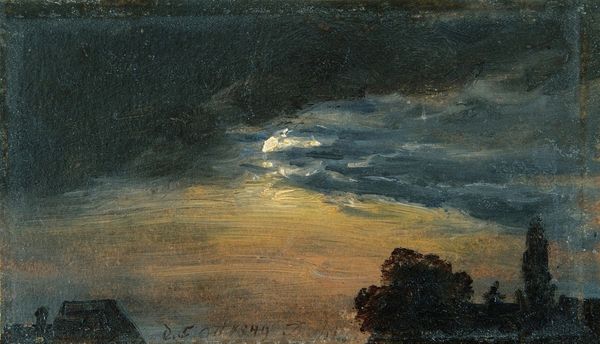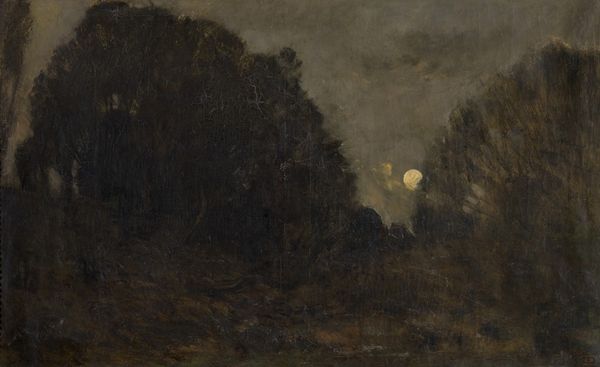
Dimensions: height 35.5 cm, width 46.4 cm, thickness 2.5 cm, depth 10.5 cm
Copyright: Rijks Museum: Open Domain
Théodore Rousseau’s painting, 'La Gorge aux Loups', presents a landscape charged with symbols of the wild and untamed, rendered in oil. The wolf, a creature of profound symbolic weight, dominates the title and lurks metaphorically in the shadowy depths of the forest. Throughout history, the wolf has been a figure of fear and respect, embodying both the ferocity of nature and the primal instincts within ourselves. In ancient Rome, the wolf was paradoxically a symbol of both destruction and nurturing, as seen in the myth of Romulus and Remus suckled by a she-wolf. Here, Rousseau channels this deep-seated ambivalence. The gorge, a natural passage, becomes a symbolic threshold, a place of initiation or confrontation with our deepest fears. The subdued palette and dense brushwork contribute to a sense of foreboding, engaging us on a visceral level. This is more than just a landscape; it’s a mirror reflecting humanity’s complex relationship with nature and its own inner wilderness. The symbol of the wolf continues to transform, resurfacing in contemporary contexts, carrying echoes of its ancient resonance.
Comments
No comments
Be the first to comment and join the conversation on the ultimate creative platform.
